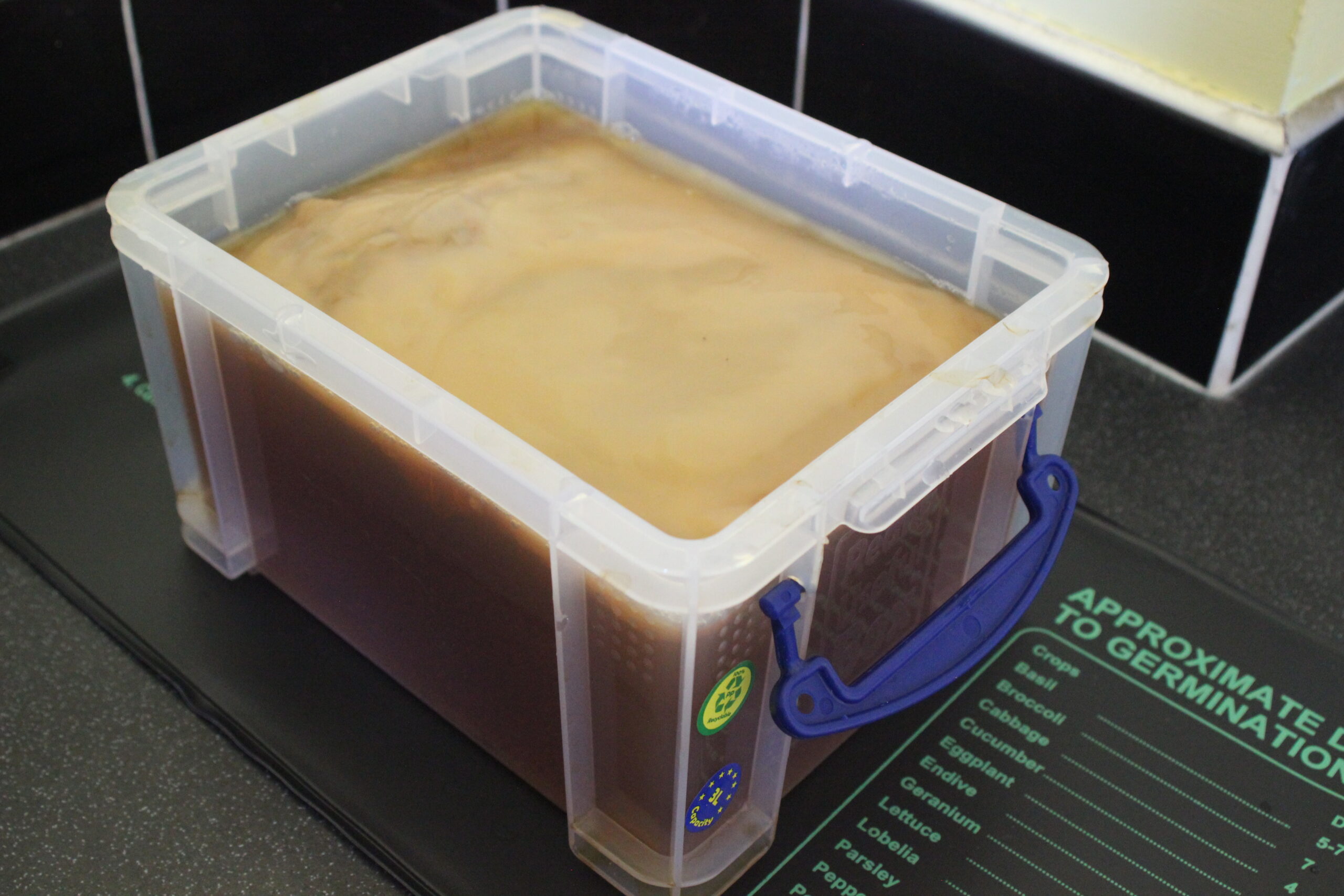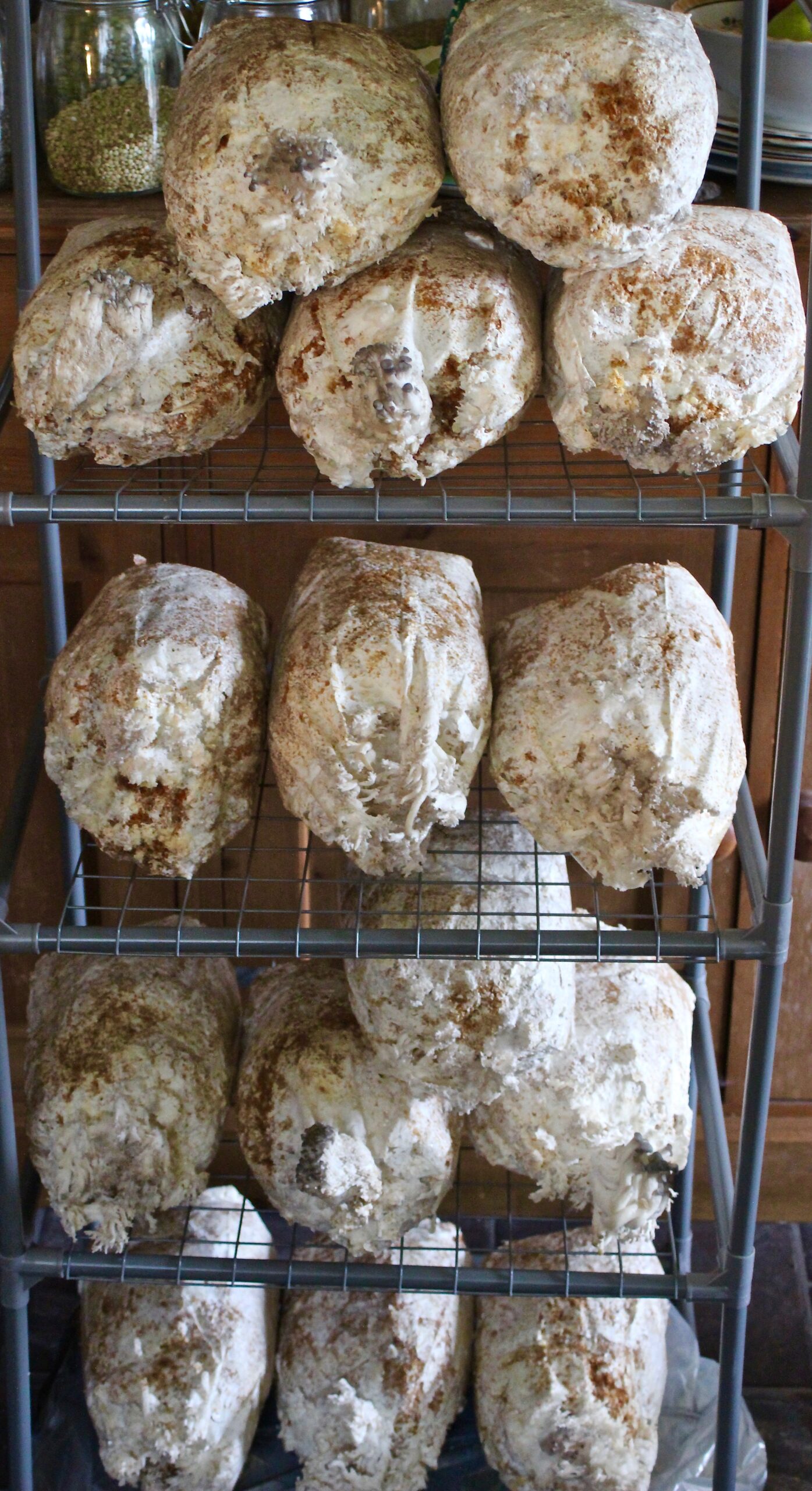Jane Fox is growing probiotic microbial cellulose and mycelium for sculpture.
Jane Fox started fermenting Scobys about 15 years ago when making the probiotic-tea Kombucha. A Scoby is a gelatinous form of beneficial microbes (symbiotic colonies of bacteria and yeasts). During the brewing of Kombucha the Scoby thrives on sweet black tea and produces lactic acid. The ‘Mother’ Scoby grows microbial cellulose. The growth of this cellulose material is self-sustaining as long as the Scobys are fed and kept warm.

Living materials are fed, incubated, fermented and grown. This is a new perspective for sculpture. Conventional materials can be expensive to manufacture and buy. In contrast, growing sustainable materials such as probiotics and mycelium is economic, light-weight, durable and they can be scaled-up without the use of harmful chemicals.

Until recently, Scoby microbial cellulose and mycelium were regarded as the bi-products of brewing Kombucha (probiotic tea) and mushroom farming. Today they are valuable and used widely across different industries.
The Design Department at Central St Martins School, London are researching applications for fashion and textiles.
‘Ecovative’ in New York state are developing building materials, funiture, packaging and food from mycelium. Mycelium sculpture and architecture is rapidly advancing.
Much mycelium naturally exists underground, is invisible and responsible for sustaining a symbiotic ecosystem. We are familiar with mushrooms, antibiotics, statins and chemotherapy drugs developed from fungi. In recent years, mycelium is increasingly grown for food, fashion, design, furniture, building construction, insulation and architecture etc. Much manufactured mycelium is grown using bi-products from agriculture and the food industry ie soy and grain husks, coffee grounds which provide nutrient-rich substrates.
Myco-remediation is when mycelium helps eliminate non-biodegradable waste from the environment such as nuclear radiation, unrefined oil and plastics. For example, Oyster mycelium can digest PCB’s, cadmium, mercury, dioxins, synthetic dyes, E.Coli and oil hydrocarbons.